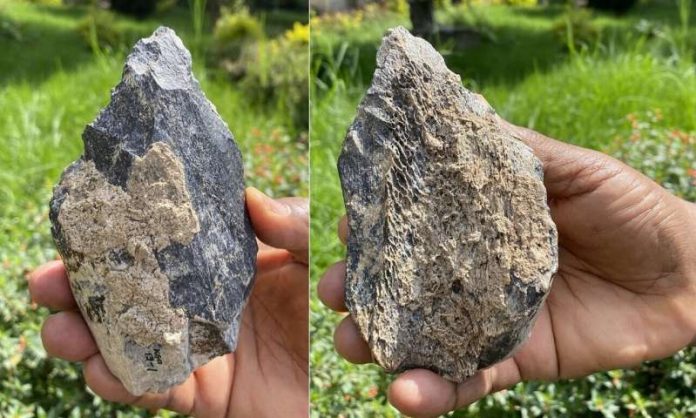From about two million years ago until around 10,000 years ago, the world was inhabited, at one and the same time, to several human species, one of the earliest being Homo erectus, who walked upright and were built like modern humans, and they eventually spread from Africa, across Europe and Asia. Our possible direct ancestor, Homo erectus, researchers have discovered, crafted a cutting-edge tool out of a hippo’s leg bone around 1.4 million years ago in the early Acheulean, starting our immense journey from ax to algorithms and perhaps Homo sapiens last great invention, artificial intelligence.
This find is a rare example of an ancient type of hand ax made out of bone rather than stone, reports a team led by paleoanthropologists Katsuhiro Sano of Tohoku University in Sendai, Japan, and Gen Suwa of the University of Tokyo. The tool was discovered at Ethiopia’s Konso-Gardula, a palaeoanthropological area discovered by the 1991 in the southern Main Ethiopian Rift, crafted during a time period when significant technological developments in stone technology were occurring. The Konso site, which has produced stone tools and fossils attributed to H. erectus, was a landscape of of wetlands, woods, and grasslands surrounding a large lake, inhabited by always unpredictable hippos.
“This bone handaxe shows that at Konso, […] H. erectus individuals were sufficiently skilled to make and use a durable cutting edge,” wrote Sano and his colleagues, suggesting that perhaps several hundred thousand years earlier than previously known, the H. erectus technology consisted of items requiring a series of precise operations to craft a roughly 13-centimeter-long oval piece of a hippo leg bone with a sharp edge near the tip that could be struck off in one blow from a stone or bone hammer. The only other Acheulean bone hand axe ever found—a 1.3 million to 1.6 million-year-old tool from Olduvai Gorge in Tanzania, was carved from a piece of elephant bone.
From the technology at Olduvai Gorge to Konso to today’s Anthropocene. “Once intelligent beings achieve technology and the capacity for self-destruction of their species, the selective advantage of intelligence becomes more uncertain,” warned Carl Sagan in Dragons of Eden.
Source: K. Sano et al. A 1.4-million-year-old bone handaxe from Konso, Ethiopia, shows advanced tool technology in the early Acheulian. Proceedings of the National Academy of Sciences. Published July 13, 2020. doi: 10.1073/pnas.2006370117.





























